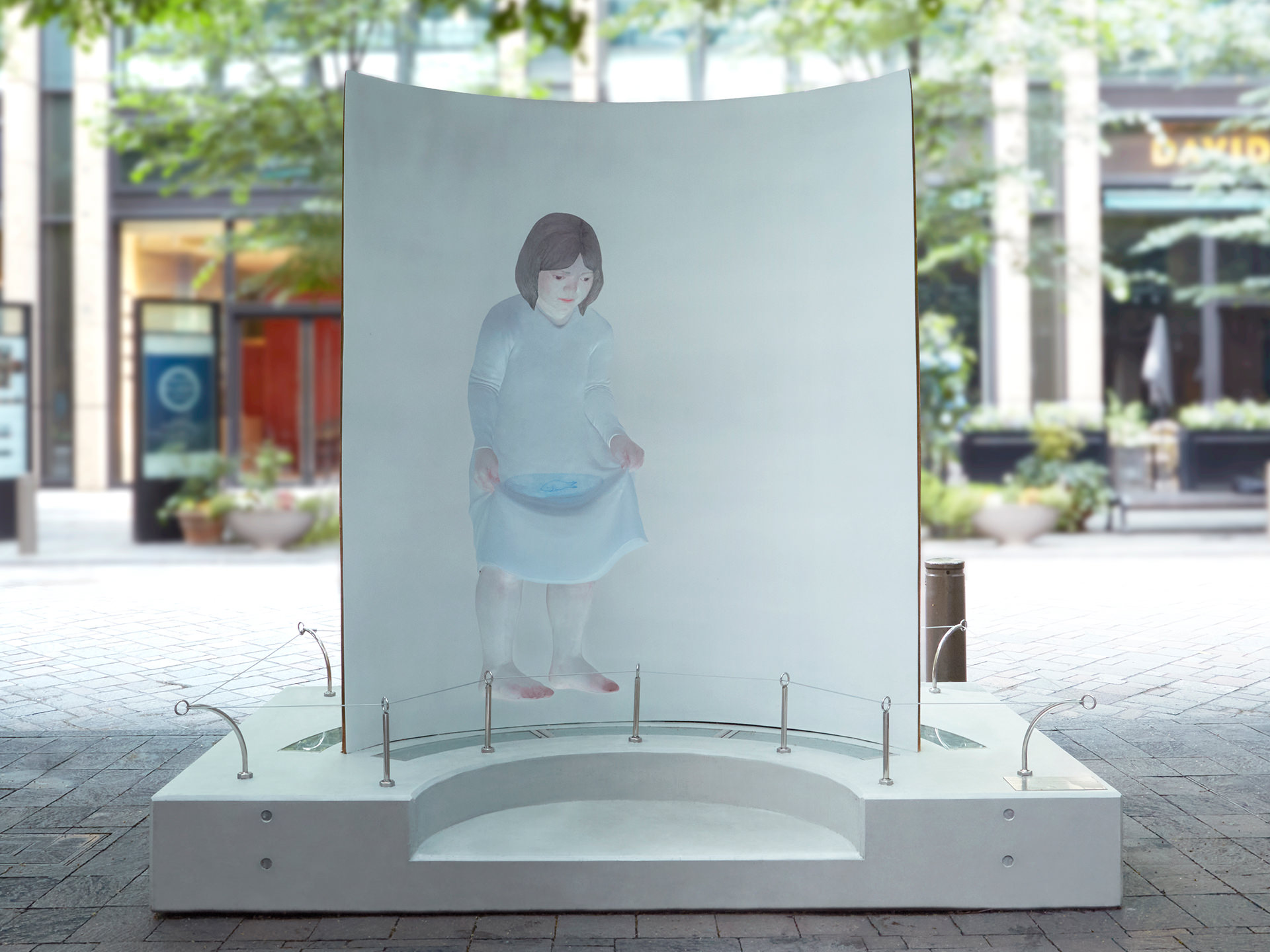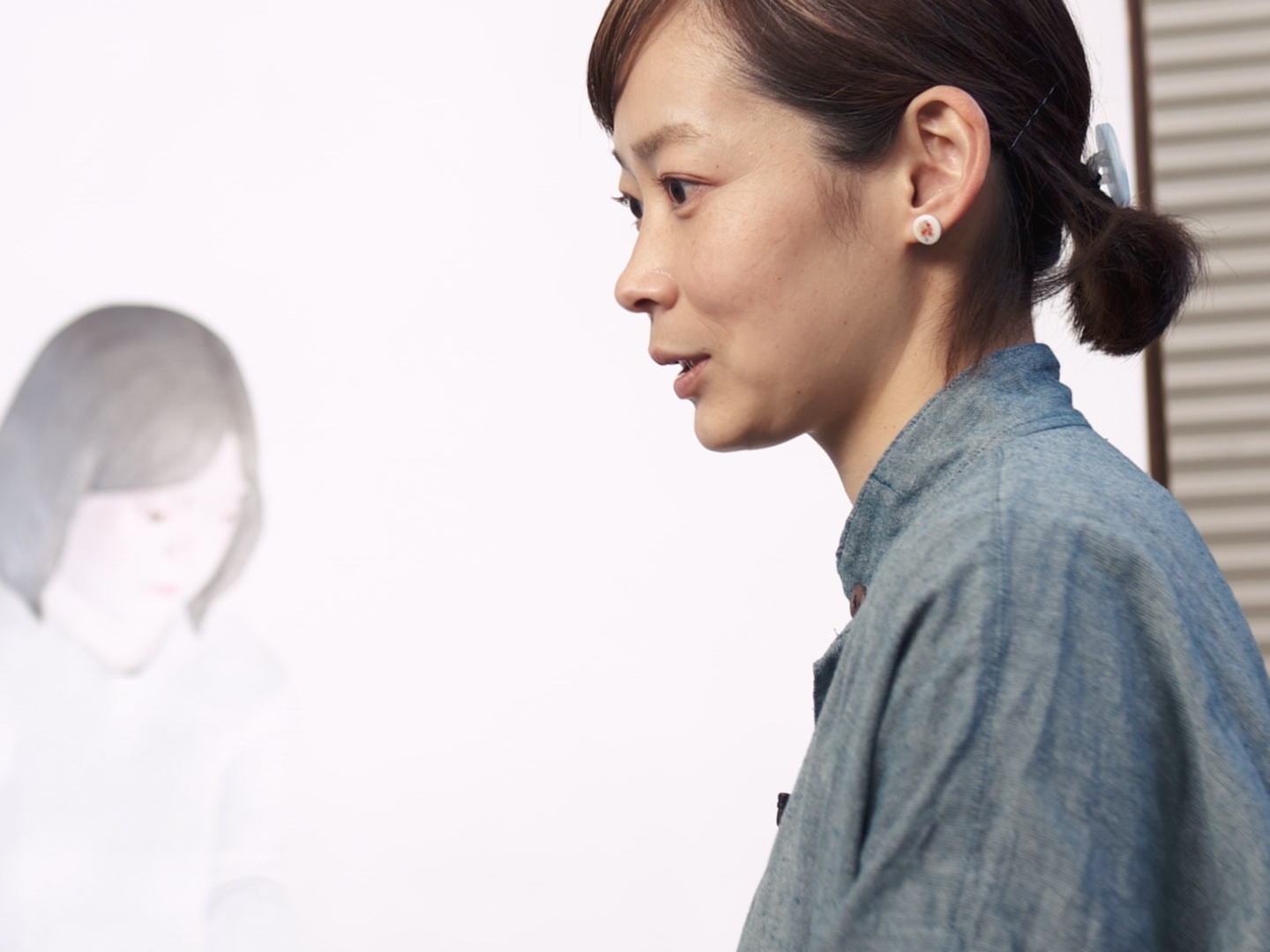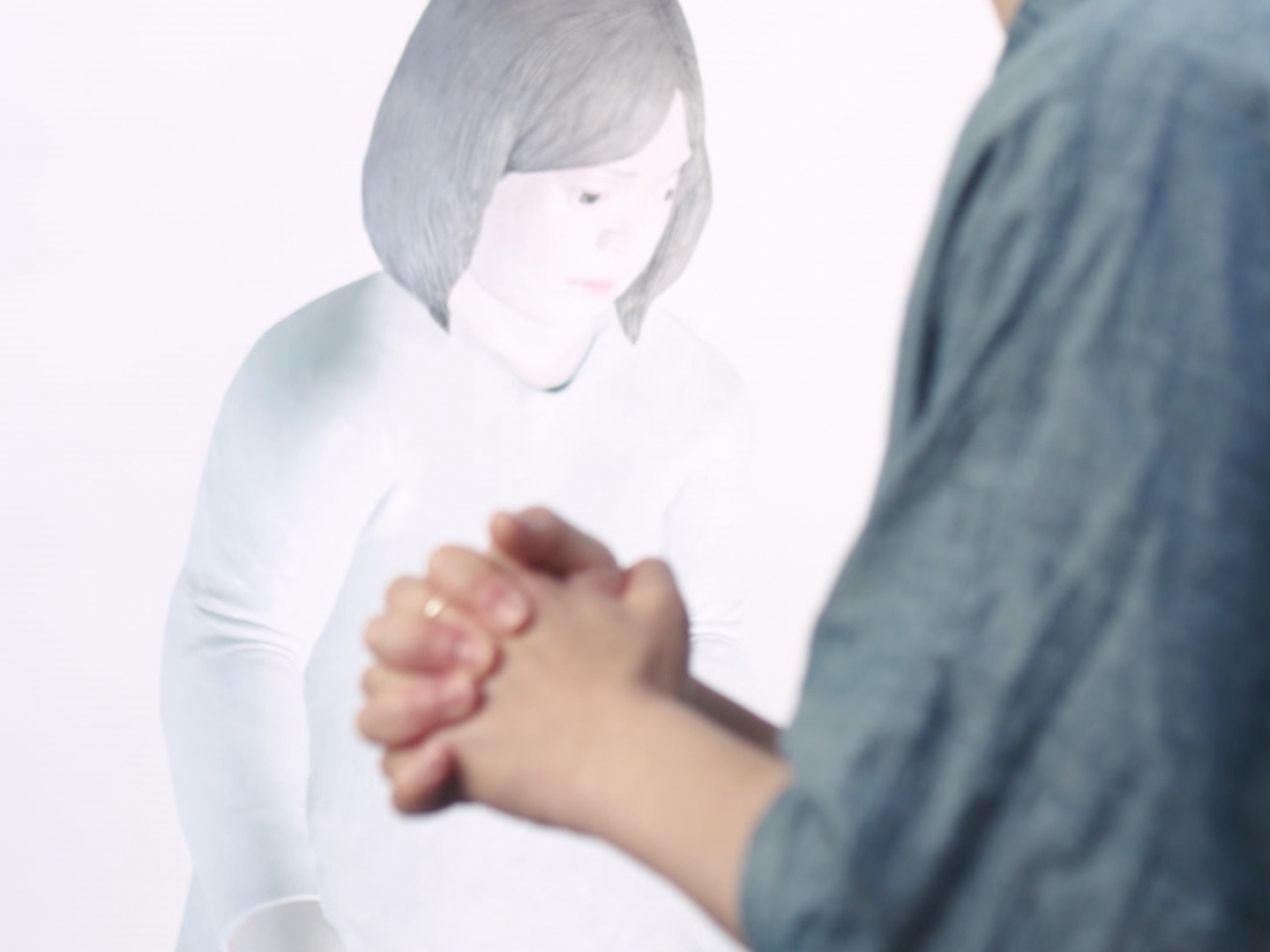——Please tell us about the concept of this work.
I thought of placing a ``piece of paper'' in a place called Marunouchi. When I create a piece of work, I first sketch out the idea on a white piece of paper, and the result is a sculpture that looks like it's standing right there in Marunouchi. I really didn't want to build a wall in Marunouchi, so I thought something with a soft feel like paper would be a good fit. When you pass in front of this sculpture, it seems as if only a girl stands out in a pure white space. The arch-shaped structure separates the viewer's field of vision from the city, creating a place where the viewer and sculpture become one-on-one, like meeting a person in a painting drawn on a sheet of pure white paper. I wanted to create a
In addition, strange phenomena (optical illusions) occur in this work, such as it appearing to protrude or the girl's line of sight changing depending on the viewing angle. Generally speaking, sculptures and paintings are objects that the viewer unilaterally "looks at," but this should make you feel like you are being "watched" by the work. The relationship between sculpture and viewer is reversed.
——Please tell us the highlights of your work.
The girl on the front is an image of a pregnant woman. She makes a puddle with her skirt and hides the fish (baby) there with great care. The motif itself is recessed without protruding. This is a characteristic of my work; all the motifs are concave. Generally, three-dimensional works are considered to have substance in the real world, but if they are recessed, the opposite is true; they do not exist in this world. Sculptures exist in this world because they have mass and are subject to the earth's gravity, but I continue to create them in order to prove that they "exist even without mass." For example, where is the presence of the "image"?
On the other hand, the back side is mirror-polished, allowing the viewer and their background to be reflected in the golden support. However, because the surface is slightly distorted, the projected real world fluctuates, and only the blue bird, the only motif, stands out clearly in the virtual image.
Since the front and back are two different worlds, there is no concrete connection. However, the real world is reflected on the back side, and there are many inversions due to unevenness. Things that I have been thinking about for a long time, such as this world and this world, image and reality, and the presence or absence of mass, are reflected in this sculpture. I feel that when countless inversions like this are placed all over the city, a reality different from everyday life is born.












